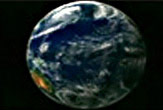On Earth Day, Ecologist Fights for Phosphorus

This Behind the Scenes article was provided to LiveScience in partnership with the National Science Foundation.
Earth Day is celebrated by more than 1 billion people worldwide, but before 1969 it was a nascent idea seeking fertile ground (so to speak). It makes one wonder how a scientific concept, for example conservation of a chemical element, transforms to a broader movement.
This question has been very much on the mind of Arizona State University (ASU) professor James Elser. Elser, an ecologist with an internationally recognized passion for the elements, is one of three architects of the ASU Sustainable Phosphorus Initiative and he's looking to create societal change.
However, much like Earth Day, this ambition started small: Just a thought about phosphorus (known by the elemental designation P) — albeit a thought that generated an internal rush as it cut through Elser's idea bank like the dorsal fin of a shark.
"The concept of P scarcity came at me in that way," Elser said. "For the last 25 years I've been working on phosphorus limitation of everything: Bacteria, Daphnia, phytoplankton, plants, cancer, evolution — everything. But, I was surprised I had never thought about whether P limitation could operate at the level of human society, that it could constrain our food production or cause societal problems, famine, food security, national security issues."
An element affecting national security? In fact, phosphorus has been operating at the level of human society for some time. Phosphorus is key to the development of bones, teeth and our DNA. It is also a key component of fertilizer, as critical to agriculture as water. Farmers use millions of tons of phosphorus on their fields every year, much of which eventually goes down the drain (literally).
So how can society be limited by our supply of phosphorus? What most people don't understand, Elser said, is that phosphorus is mined. The great majority used in intensive agriculture is in fertilizers, and essentially all of that phosphorus comes from mines.
Sign up for the Live Science daily newsletter now
Get the world’s most fascinating discoveries delivered straight to your inbox.
Further, 90 percent of geological reserves of phosphorus are located in only five localities: Morocco and the Western Sahara, China, South Africa, Jordan and the United States — and real questions are emerging about what reserves actually remain.
For comparison, in OPEC, 12 countries control 75 percent of oil reserves.
"Morocco is poised to be the Saudi Arabia of phosphorous," Elser quipped. "I started looking deeper into the issues with my ASU colleagues," Elser said. Mark Edwards, an ASU agribusiness expert, and Daniel Childers, an ASU phosphorus biogeochemist, were arriving at similar concerns: A small number of mines, limited reserves, rising prices, food riots, agricultural collapse, and famine. "Mark said he couldn't sleep for three weeks after he made the connection," Elser related.
"Recently we met in Dan's classroom, in a town hall setting, where we encouraged students to get involved," Elser recalled. "We told them 'If you want to have an impact on an important issue, get in on it early. At the cutting edge, you can shape things and make a difference, simply because right now there are maybe only 30 people in the world asking these questions about P scarcity and looking for solutions'."
Elser should know. Supported by National Science Foundation funding over the last 20 years, his career has allowed him, in collaboration with others, to become an international expert on phosphorous in biology and ecology, and to pioneer a broader understanding via his development of the theory of biological stoichiometry, the study of balance of energy and multiple chemical elements in living systems.
"It is because of this work that I have enough credibility to stand up and say that phosphorus scarcity is something important that we need to work on." Elser said.
"Scientists need to look at the worldwide picture of phosphorus distribution. We can sequence the entire genomes of species, but no one can really say how much economically extractable phosphorous reserve exists!" Elser adds. "That's not very reassuring."
So is phosphorus running out? ASU has taken these concerns seriously, and the university provided the seed money for the launch of the Sustainable P Initiative. The launch, aptly timed for Earth Day, April 22, will be held at the Arizona Science Center in Phoenix.
Elser, Childers and Edwards will step onto a very public stage for the first time to discuss the issues and to build collaborations with farmers, educators, engineers, designers and civic leaders to discuss green agriculture, wastewater reclamation, resource economics and long-term sustainability.
"We need to be asking how we can achieve sustainable phosphorus by closing the phosphorus cycle in human and agricultural waste streams. Our hope for this launch is that we can, and our students can, not only help better define the problems, but turn an idea into creative solution building with the community."
You can learn more about phosphorous here.
For more "green" news related to ARRA, see: NSF Earth Day
Editor's Note: This research was supported by the National Science Foundation (NSF), the federal agency charged with funding basic research and education across all fields of science and engineering. Any opinions, findings, and conclusions or recommendations expressed in this material are those of the author and do not necessarily reflect the views of the National Science Foundation. See the Behind the Scenes Archive.










